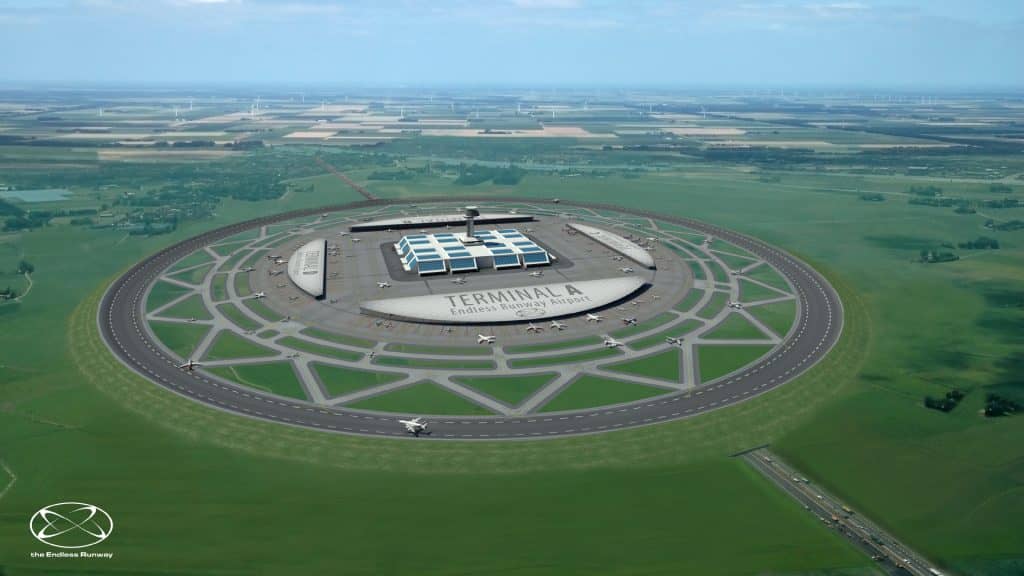Designers and architects have been working for decades on solving the space issues on almost every airport around the world, and now they might just have come up with the perfect solution. The concept of an endless runway has been proposed by Henk Hesselink from the National Aerospace Laboratory in the Netherlands, which consists of turning the contemporary straight runways into circular ones.
Mr. Hesselink and his colleagues are planning on winning funding from EU to put their circular runway plans into action before 2050, the year when the air traffic in Europe is speculated to triple in volume.
The researchers say:
“Physical constraints on runway operations, like wake-vortex separation minima and cross- and tailwind limits, make it hard to improve performance of conventional airport configurations further.”
The proposed circular runway will have a diameter of 3 to 4km, with the terminal and other infrastructure circumscribed within the circle.
“This makes the airport compact, while allowing current-day aircraft to use the circle without significant structural modifications,” says the research document.
Mr. Hesselink thinks that the making the runways circular can dramatically increase the capacity of a constrained airport.
In an interview with The Independent, he said,
“In principle the circle is so large that you can have three aircraft [operating] without interfering with each other. We took the busiest day of the year at Charles de Gaulle and simulated it for a circular runway. It worked well.”
And besides helping in hosting more planes at a time, a circular runway helps eliminate the problem of crosswinds, which can make landings more challenging by slowing the “flow rate” of aircraft and sometimes even stop the operations entirely. The “Endless Runway” concept will help an aircraft operate into the wind rather than across it.
Hesselink said that the idea is not something completely new, and has already been tested back in the 1960s,
“Some flight trials have been conducted, but the air-traffic controllers and the systems were not ready. You need computer support for this.”
The circular runway will also feature a slight incline to cater for the complex forces involved, but this means increased complexity and training for the pilots, But, Mr. Hesselink commented:
“There have been some trials on military airports in the US: it’s actually pretty easy to do.”
Pilots have been rather skeptical about the plans, with many expressing their concerns in online forums. One wrote:
“I can’t see how this could result in an increase in traffic or spread the noise around much. The only useable part of the circle is the into wind part, the rest is crosswind or downwind to varying degrees meaning that most movements will inevitably be from the same into wind sector, as will the approaches and departures.
Then there’s tyre wear, stress on the gear, the practical problem of landing in a turn, designing a whole new instrument landing system that can cope with a 360-degree runway…”
Mr. Hesselink remains adamant about his design though,
“If you talk to pilots there are some challenges. We have really considered all the nominal situations and taken into account the safety aspects.”
A leading air safety expert in the Netherlands said:
“His idea is fun, but is not very practical. It would take up a huge amount of space – if the full circle was built. The accuracy required to land without building up high sideloads on the landing gear probably require all landings to be performed by an autoland system. This would have an impact on an airport’s capacity.”
The project team are undeterred,
“Our next wish is to see if we can do real flight trials,” said Mr Hesselink, adding “You don’t have to build the full circle at once.”
What are your views on the circular runway concept? Comment below!

